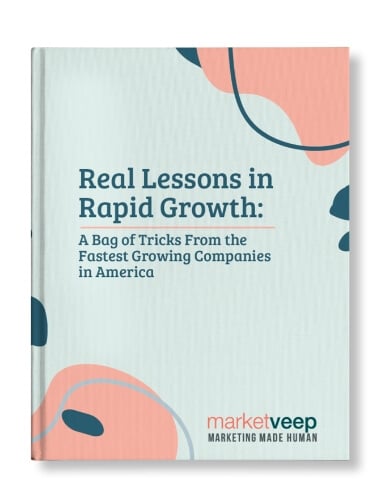Improve Sales Performance: Dive Into Sales Analytics


By Bill Viau
Any effort to improve sales performance begins with questions: What’s working? Where do our best opportunities lie? Which parts of our sales process are the most inefficient? Sales analytics can give you the answers to these questions so your business can make informed decisions about what to do next. But to get the most out of sales analytics, you’ve also got to make them visible. Here’s how.
The popular imagination paints sales as a place where charisma and personal magnetism are the sole drivers of success. While interpersonal skills do matter in sales, many companies have found that it takes more science than art to truly improve sales performance.
Big Data continues to saturate modern business. Valuable insights from analytics are steadily changing the way we approach the sales process. Companies now use carefully selected metrics to maximize growth opportunities, sharpen efficiency, and put sales reps in a position to succeed. And it works!
The proof, of course, is in the data. Research from McKinsey found that fast-growing companies (over 6% growth year-over-year) are 15% more likely than slow growers (less than 5% growth) to rate themselves as effective users of sales analytics:
The migration of information, business, and social interaction to the internet has made data widely accessible. Digital activity and online behaviors are simple to track and compile into real-time metrics with relevant software. But access to analytics alone cannot ensure that they are effective—or actionable.



Many businesses collect data but aren’t sure how best to use it. “Vanity metrics” — like page views, leads in the sales funnel, and total customers acquired — might feel good, but don’t correlate to real success. More actionable metrics — like conversion rates, cohort analyses of the sales pipeline, or customer acquisition costs — can teach your sales team what’s actually working and show leadership how to improve sales performance.
In other words, it takes healthy skepticism and scrutiny for sales analytics to reveal valuable insights. So what works? Let’s dive in.
Track Sales Analytics to Improve Sales Performance
Sales analytics are better suited to some tasks than others. They have been shown to excel in areas like:
- Lead Generation (with better lead scoring and targeted follow-up, intelligent automation, and insights into conversion factors)
- Customer Lifetime Value (using algorithms to predict cross-selling and upselling opportunities or reveal negative patterns that cause churn)
- Resource Allocation (by aligning coverage and account strategies to current needs more effectively than traditional segmentation)
- Price Optimization (with predictive analytics, dynamic deal scoring, and decision-tree analytics for negotiations)
- Personnel Management (using HR and sales data to pick out the behavioral factors that correlate to success — which can improve hiring practices and internal training)
All metrics are descriptive by nature. They show what is. But it’s the ability to apply metrics in a diagnostic, predictive, or prescriptive manner that gives them real value.
- Diagnostic: The first goal of analytics is often to diagnose the reasons behind, or attach potential explanations to, sales data. Why are sales up or down in a particular vertical? Why is churn increasing in a certain product line? These analytics attribute causes to data trends — they look back and explain what happened.
- Predictive: The goal of these analytics is to predict the traits, outcomes, and value of people or sales activities. For example, scoring leads on likelihood to close, forecasting opportunity in a vertical or region, or knowing how an account is likely to react to a certain tactic or message. They look ahead and tell you what results to expect.
- Prescriptive: Diagnostic and predictive insights help you prescribe solutions. Which sales content, tools, or methods need to be prioritized? What message should be used when talking with a customer in this demographic? Prescriptive analytics tell you what to do next.
The right analytics can improve sales performance with actionable changes to priorities, processes, and goals. For example:
| Data Insight | Solution | Result |
|
A higher percentage of calls are answered in the evening. |
Shift calls to the evening. |
Triple the rate of contact on the first call. |
|
Reps who say “we” more often than “I” close more deals. |
Incorporate usage of collective voice into the internal training program. |
New and retrained reps are closing 15% more deals. |
|
Customer Lifetime Value is much lower in 3 of our 8 target industries. |
Redirect all resources from the 3 lower value verticals towards expanding business in the 5 higher value verticals. |
The customer base expands in the more profitable industries, and total revenue goes up. |
Analytics can make a difference across the scope of your sales operation, from a broad strategy to daily front-line decisions. Use them to inform, direct, and prime your sales team for success. The more you know, the more effective you’ll be.
Learn How to Measure Sales Performance (and Report It)
If you’re going to use analytics to improve sales performance, the first step is to decide upon what you’ll measure and how you’ll be measuring it. Once you attach a tangible revenue impact to a particular tactic, you can set actionable objectives for your sales team.
What Metrics Improve Sales Performance?
Here are a few sales analytics metrics and KPIs — tied to both high-level and ground-level data — that are worth considering as you work to improve sales performance:
- Customer Acquisition Cost (CAC): This is a cornerstone KPI that aggregates all costs associated with acquiring a customer (sales and marketing). By comparing CAC to the revenue earned on the deal, you’ve got a clear ROI. A sales process needs to be profitable as well as scalable — it can’t cost more to acquire a customer than the customer’s lifetime value (LTV, another key metric), or you’re losing on the deal. Track CAC in each vertical, for each product and target demographic, to get a clear idea of what’s worth the time of your sales team.
- Lead Conversion Rate: This shouldn’t be tracked as an overall average rate for your website or email list — that’s too broad to provide much actionable insight. It’s more effective as a granular metric for individual landing pages or email campaigns. Are sales and marketing well-aligned around an effective message? Which headlines, talking points, and CTAs are sparking interest?
- Cannibalization Rate: New products cannibalize the sales of old products. Ideally, additional sales from the new product are larger than the reduction in sales of older products, but you don’t know unless you track it. Track product cannibalization to improve your customer experience — a high cannibalization percentage may mean that your new and old products have competing value propositions and are alienating existing customers. Low cannibalization means the products are effectively differentiated, and older customers are still on board.
- Quote-to-Close: This is an efficiency metric, but it can also relate to productivity: How good is your team at closing a deal once a quote is on the table? It also shows you whether your lead quality is as good as you think it is and whether your sales process is engaging and nurturing the right prospects at the right time in the right way.
- Sales by Region: Regional differences in your customer base, sales messages, and product lineups need constant tracking to reveal how they’re impacting revenue. Segment sales by region to add visibility into the markets where you’re most competitive (and profitable). Tweaking and tracking over time can help you set more effective regional strategies or emphasize the markets that have shown more opportunity.
- Connects to Meetings Set: Use this metric to evaluate either the performance of individual reps or the effectiveness of a new script you’ve installed for your team. It will show you how strong their pitch is — due to some combination of natural selling ability and trained approach. Again it’s an efficiency metric, which is inherently more valuable than a quantity metric (quantity easily slips into the “vanity” category).
How Should You Report These Sales Analytics Metrics?
Sales analytics can’t accomplish anything in a vacuum. Collecting and organizing data is the first step, but unless they get in front of the right eyes, for the right reasons, they could end up lost in the file cabinet — a sponge for resources without a productive output. Instead, cater custom reports to immediate analysis needs, populate visual dashboards with metrics central to your business, and publicize team-relevant KPIs on sales leaderboards.
Custom Reporting
One approach is to use a tool that collects diverse data (more than you’ll ever need), and only create custom, filtered reports for analysis when and where you need them. You may have a suspicion about the positive or negative impact of a sales tactic, product line, region, vertical, or something else.
Rather than printing an overwhelming set of regular reports on everything under the sun (many of which won’t have immediately actionable takeaways) to toss on the desk each month, craft manageable custom reports that investigate your hypothesis with only relevant data sets. Then share this much more digestible, actionable report at the next strategy meeting with suggestions on what to do next.
HubSpot Sales is one example of an end-to-end sales platform with tools to collect and analyze data while producing highly customizable reports on the kinds of metrics listed in the previous section. Since it integrates seamlessly with the HubSpot CRM and Marketing platforms, these analytics can be essential to understanding and aligning the strategies of your marketing, sales, and service teams.
Data Dashboards
Not everyone on your team is trained to handle ad-hoc analytics reporting in CRM tools, which is fine. The best salespeople should be focusing their efforts on customer calls and closing deals with sales demos. Analytics needs to empower them to sell more, not take up their time so that they sell less.
Automated sales data dashboards — whether with free sales technology tools like Google Sheets and Excel or more robust options like Databox or Klipfolio — make this possible. The ideal sales dashboard is intuitive to read, easy to operate, and fully customizable to your business needs.
The software tool crunches the numbers from all your most relevant digital sales activities. It gives real-time, live feedback on the metrics and KPIs that leadership needs to make critical strategic decisions. Reporting on sales analytics is straightforward when all it takes is a glance at the dashboard.
Sales Leaderboards
A leaderboard creates transparency and accountability for sales teams while also adding an element of competitive motivation. It’s best to use your leaderboard to celebrate the success of your top-level performers, not to draw attention to underperformers. As the old business wisdom says, praise in public, criticize in private.
A publicly visible TV display with monthly rankings for the top 10 reps (on say, a 25 person sales team), can do a lot to incentivize success and build an open culture. Track each rep’s performance against a few critical time-bound objectives such as total outbound calls, new MRR (monthly recurring revenue), or new logos (new business accounts acquired).
Sales leaderboards make many beneficial contributions to your sales operation. They can:
- Instill ownership over high-level sales goals on the front lines
- Assist leadership in understanding success traits so they can be modeled/trained
- Enable quick decision-making without waiting for a quarterly report
- Publicize team success to reinforce positive execution of your sales process
- Make strategic sales KPIs more visible to the ground floor
- Offer rewards and incentives in exchange for hard work
Feed the leaderboard real-time data from your CRM for live updates on the floor when deals, demos, and contracts come in.
Sales Analytics Equip Your Team For Growth
It’s easy to think of data as purely descriptive — instructive in hindsight, but historical in nature — but the truth is that your sales analytics are a living resource for day-to-day feedback and reliable performance forecasts on each new initiative.
Save yourself a lot of trial and error by investing time and resources into your sales analytics (and reporting) upfront. Insights from analytics will help you to better leverage your sales enablement tools and optimize training. Your business only stands to gain in productivity, efficiency, and accountability as it grows. Work smarter and harder.
Get The Latest From
Market Veep
RELATED ARTICLES

Master Sales Funnel Strategies: Tofu Mofu Bofu!
Between SEO, SEM, and SERPS, we’re always finding clever ways to break down concepts into four...

HubSpot Sales Forecasting: Optimizing Manufacturing Success
As important as it is, manufacturing forecasting tends to be a stressful, time-consuming task with...

How Manufacturers Can Boost Sales with PPC
When approached correctly, PPC for manufacturers can help your company establish a strong online...

Get Growing!
Download our eBook and get advice from 8 CEOs of Inc. 5000 companies in their own words.

GREAT MARKETING PARTNER
Market Veep is a great firm that handles all of our marketing efforts. This is the second time that I have used the firm. I highly recommend Market Veep!

Cres F.

EXCEPTIONAL EXPERIENCE
Market Veep's Onboarding Experts in Inbound Marketing are an absolute game-changer! From the get-go, their approach was top-notch. Market Veep's team has undoubtedly set the bar high for excellence in inbound marketing. Five stars aren't enough to commend their outstanding service!

Matthew W.

BEST PARTNER EVER!
As a growing business, setting up our first-ever HubSpot account was a crucial step towards enhancing our marketing and customer management strategies. From the moment we contacted MarketVeep, their team demonstrated professionalism, expertise, and a genuine desire to help us succeed. Overall, our experience with MarketVeep was exceptional, and we couldn't be happier with the results. Thanks to their guidance, we are now utilizing HubSpot to its fullest potential, streamlining our marketing efforts, and nurturing leads more effectively.

Jean M.

SET UP FOR SUCCESS!
We had an exceptional experience with Market Veep! Their team is professional, super organized, and friendly, and I truly enjoyed working with them. They executed on time and made the process super easy with their organization and documentation. In addition, they provided additional guidance and answered my many questions as I was new to HubSpot, and provided documentation resources for future use. We're now set up to leverage all that HubSpot marketing has to offer, and we couldn't have done it without Market Veep's expertise.

Bailey G.

OUTSTANDING WORK
There aren't enough words to describe the outstanding, professional work MarketVeep has provided to our company. From start to finish, the website design/development team at MarketVeep assigned to our project was extremely knowledgable, respectful, efficient and timely. The results went above and beyond our expectations and we could not be more thrilled with the improvements to the user experience on our website! Bravo MarketVeep, we'll absolutely be back with more projects!

Nadine B.

5 STARS FOR MARKET VEEP!
We had a fantastic experience with Market Veep! Their expert team seamlessly guided us through implementing HubSpot and provided comprehensive training across Sales, Service, and Marketing Hubs. Their knowledge and support significantly enhanced our workflow and overall efficiency. Highly recommend Market Veep for top-notch HubSpot solutions!

Anneke C.







